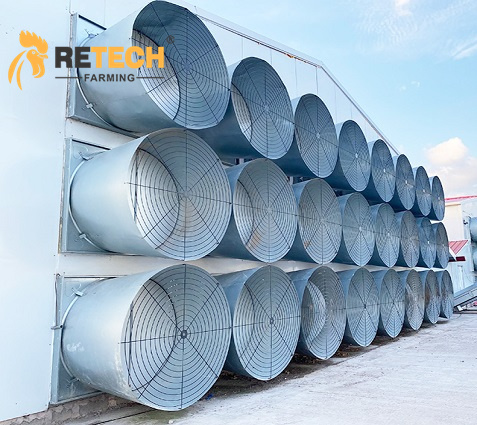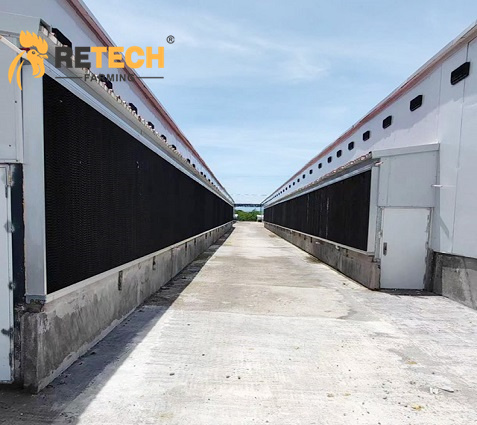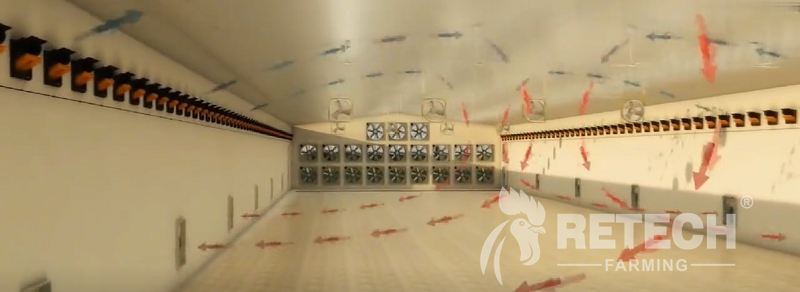Close search
 Published :
/
Published :
/ Posted by : Retech
Posted by : RetechA natural air system is used for warm weather conditions in houses with side curtains. This system uses temperature differences and natural air movement to remove excess heat and moisture, and to supply oxygen.
Changing environmental conditions within a short period of time reduces the effectiveness of this system in modern poultry production. To maintain a constant temperature to promote maximum comfort for the birds, some degree of mechanical air movement must be provided in conjunction with the natural air system.
As a farmer, ensuring your chicken house is well ventilated is vital to the health and production of your chickens. Here are some suggestions for chicken house ventilation design and summer cooling:
1.Wind direction and speed: Ventilation openings in the chicken house should be set relatively high to allow hot air to escape. Make sure the airflow from the vents is not directed toward the birds to avoid cold stress.

2.Number of vents: According to the size of the chicken house and the number of chickens, the vents should be reasonably configured. The number of vents should be sufficient to ensure air circulation.
3.Fan quality: Choose a high-quality fan to ensure stable performance to effectively discharge hot air. Retech Farming uses 52 fans, which are suitable for large-scale broiler houses.

1.Wet pad cooling:
Cooling pad is an effective cooling method. In hot weather, wet curtains are used in conjunction with fans to reduce the temperature in the chicken house. Make sure the wet curtain is clean and not clogged with dust and chicken feathers.

2.Wind Speed Control:
Appropriate wind speed helps reduce the body temperature of the chickens. In hot weather, the wind speed should be maintained between 2-2.5 m/s.
3.Environmental Controller:
Use an environmental controller to manage the turning on and off of fans to avoid bird stress.
1.In hot and humid weather, use low-temperature well water as the water source for the wet curtain to improve the cooling effect.
Clean the wet curtain regularly to ensure that the water nozzle is not blocked.

2.Closed Chicken House:
Improve the airtightness of the chicken house, especially the manure outlet at the end, to reduce the entry of hot air from the outside.
3.Local ventilation:
Observe ventilation in local areas to ensure birds are benefiting from ventilation throughout the house.
4.The temperature difference between the head and tail of the chicken house:
Improve the airtightness of the chicken house and ensure that the wind speed before and after is not much different.
Control the ventilation time to avoid heat accumulation in the flowing air.

In short, reasonable ventilation design and cooling measures can help improve the production efficiency and health status of chickens
The poultry house ventilation system is one of the most important elements to be installed before starting a farm. The health of the poultry depends on its correct selection and efficiency. Maintaining optimal climatic conditions in the poultry house allows for proper growth and fewer poultry diseases.
So if you are designing a tunnel ventilated chicken house or are interested in ventilation equipment for your chicken house, please feel free to give us a call, below is our contact information:
Website: www.retechfarming.com
Facebook: @retechfarmingchickencage 100k Followers